(Updated on March 29, 2024)
Plenary Talks:
May 9, 09:30 – 10:00 [Room A]
Plenary Talk 1:
Sustainable Humanosphere with Solar Power Satellite
Speaker: Hiroshi Matsumoto (Kyoto University, Japan)
Chair: Naoki Shinohara (Kyoto University, Japan)
Abstract:
“Sustainable Humanosphere” is a new word which we created 20 years ago. It is an essential space that is indispensable for human activities and humanitarian technologies which needs various humanitarian technologies not only engineering but also social science, politics, and economy. In order to realize the Sustainable Humanosphere I strongly believe the technology is most important. One of hopeful novel technologies for the Sustainable Humanosphere is a Solar Power Satellite (SPS) and a Wireless Power Transfer (WPT) technologies. I started a R&D of the SPS at Kyoto University in Japan. In the end of 1970s, we expanded our SPS research activities but we may have to develop SPS and the WPT technologies even utilizing the Moon and the Mars. In the past 45 years, the technology and science for the SPS has been in progress by a huge number of researchers and engineers. When I carried out the world first rocket experiment of the WPT called “MINIX” in 1983 with my colleagues in Japan, the research group of the SPS and the WPT was not many but limited. However, currently there appeared several big R&D projects for the SPS not only in Japan also in the world. In the plenary talk, I introduce historical R&D activities of the SPS and WPT, which were mainly carried out at Kyoto University, and describe future prospects of the Sustainable Humanosphere with the SPS and the WPT.
Biography:
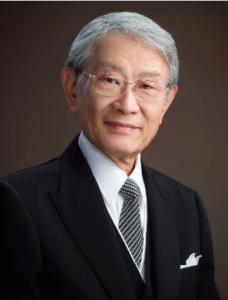 Hiroshi Matsumoto is the director of the International Institute for Advanced Studies. From 2015 to 2022, he was President of RIKEN. He is an expert in space radio science, space plasma physics, and space solar power transmission. He completed gained doctoral degree from Kyoto University in 1973. From 2002 to 2004, Director of the Research Institute for Sustainable and Radio Sciences, Kyoto University, and from 2004 to 2005, Director of the Research Institute for Sustainable Humanosphere. He also served as President of Kyoto University from 2008 to 2014. He has received numerous awards and honors, including the Gagarin Medal of the Russian Astronaut Federation, the Chevalier of the Order of Honor of the French Army, the Honorary Officer of the Order of Honor of the British Empire, and Grand Cordon of the Order of the Sacred Treasure of Japan in 2021. He is IEEE Fellow and IEICE Fellow, AGU Fellow, and he also served as President of URSI, Union of Radio Science International, from 1999 to 2002.
Hiroshi Matsumoto is the director of the International Institute for Advanced Studies. From 2015 to 2022, he was President of RIKEN. He is an expert in space radio science, space plasma physics, and space solar power transmission. He completed gained doctoral degree from Kyoto University in 1973. From 2002 to 2004, Director of the Research Institute for Sustainable and Radio Sciences, Kyoto University, and from 2004 to 2005, Director of the Research Institute for Sustainable Humanosphere. He also served as President of Kyoto University from 2008 to 2014. He has received numerous awards and honors, including the Gagarin Medal of the Russian Astronaut Federation, the Chevalier of the Order of Honor of the French Army, the Honorary Officer of the Order of Honor of the British Empire, and Grand Cordon of the Order of the Sacred Treasure of Japan in 2021. He is IEEE Fellow and IEICE Fellow, AGU Fellow, and he also served as President of URSI, Union of Radio Science International, from 1999 to 2002.
May 9, 10:00 – 10:30, [Room A]
Plenary Talk 2:
Wireless Charging Applications in Materials Handling and Transportation
Speaker: Grant Covic (Auckland University, New Zealand)
Chair: Hiroshi Fujimoto (The University of Tokyo, Japan)
Abstract:
Over the past three decades there has been significant development in resonant inductive power applications starting first in Japanese materials handling industries, and later shifting attention to light duty wireless charging systems for EVs. More recently academic research and industry focus has begun to shift attention to heavy duty and dynamic solutions pushing academic research from conceptual design toward systems that address many of the challenges of such publicly deployed systems, including interoperability, thermal management, robustness, and cost.
While today bespoke systems exist as demonstrators, the challenge of higher power wireless power in transport applications is significantly more complex. Interoperability requires systems that address multiple power classes with wide ranging ground clearances, and ability to meet efficiency, safety, and emissions requirements under both stationary and dynamic conditions.
The seminar begins by reflecting on the early work undertaken by the University of Auckland together with Daifuku Industries in Japan to address materials handling challenges in the 1990s. It highlights some of the choices made that have found their way into the various standards in development today. Finally, it highlights key research challenges that are being targeted to meet the future goal of a truly electrified interoperable transport fleet.
Biography:
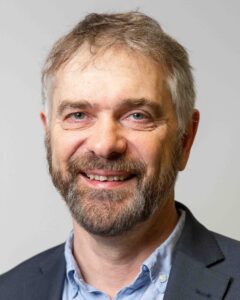 Grant Covic is a full Professor within the Department of Electrical, Computer, and Software Engineering Department at the University of Auckland. He was a co-founder of “HaloIPT” that focused on electric vehicle (EV) wireless charging infrastructure. Before it was on-sold, HaloIPT received the Clean Equity Monaco award for excellence in the field of environmental engineering and two NZ clean innovation awards in the emerging innovator and design and engineering categories. He has been awarded the New Zealand Prime Minister’s Science Prize, the Vice Chancellors commercialisation medal and the KiwiNet research commercialisation awards for his research, and in 2021 the IEEE Power electronics emerging technology award. He is a Fellow of both Engineering NZ and the Royal Society of NZ.
Grant Covic is a full Professor within the Department of Electrical, Computer, and Software Engineering Department at the University of Auckland. He was a co-founder of “HaloIPT” that focused on electric vehicle (EV) wireless charging infrastructure. Before it was on-sold, HaloIPT received the Clean Equity Monaco award for excellence in the field of environmental engineering and two NZ clean innovation awards in the emerging innovator and design and engineering categories. He has been awarded the New Zealand Prime Minister’s Science Prize, the Vice Chancellors commercialisation medal and the KiwiNet research commercialisation awards for his research, and in 2021 the IEEE Power electronics emerging technology award. He is a Fellow of both Engineering NZ and the Royal Society of NZ.
His research and consulting interests include power electronics and resonant inductive power transfer (IPT) from which he has published more than 200 papers in IEEE journals and conferences. He holds more than 50 patent families licensed to industry for specialized IPT application areas. Presently he directs a government funded research program on stationary and dynamic wireless charging of EVs, while also co-leading the interoperability sub-team within the SAE J2954 wireless charging standard.
Keynote Speeches:
May 9, 11:00 – 11:30 [Room A]
Keynote 1:
International regulations on Wireless Power Transmission (WPT)
Speaker: Satoshi Kobayashi (YRP R&D Promotion Committee, Japan)
Chair: Naoki Shinohara (Kyoto University, Japan)
Abstract:
Question ITU-R 210/1 describes that Wireless Power Transmission (WPT) is defined as the transmission of power from a power source to an electrical load wirelessly using an electromagnetic field and that WPT technologies may be useful in several applications including solar power, airborne platforms, lunar stations, electric vehicles, Internet of Things (IoT) devices and wireless charging of mobile / portable devices.
Some applications of WPT will contribute to the carbon-neutral economy and SDGs.
Although WPT applications of low-power and/or with very short-distance transmission have already been in use without permission by authorities, other WPT applications, such as EV charging and Solar Power Satellite, require careful studies in order not to cause harmful interference to radiocommunication services or human hazard.
The radiocommunication services are strictly regulated by the Radio Regulations (RR), which are approved by the World Radiocommunication Conferences (WRCs) of the International Telecommunication Union (ITU). The RR regulate the use of radiocommunications and shall be binding on all Member States of the ITU. The RR provides, among others, allocation of frequency bands for the use by a number of radiocommunication services and the services using the allocated frequency bands are protected from interferences caused by the others.
On the other hand, although WPT uses radio frequencies, there is no explicit provisions for WPT in the RR and provisions on ‘electric apparatus and installations’ are applicable. According to the RR provisions, administration of each country shall take all practicable and necessary steps to ensure that the operation of electrical apparatus or installations of any kind does not cause harmful interference to a radiocommunication service. Therefore, regulation on WPT is a national matter. There are no other regulations applicable globally. As a result, the use of frequencies for radiocommunication services has a priority to that for WPT.
The RR also provides that ‘In this matter, administrations should be guided by the latest relevant ITU-R Recommendations.’ Technical and operational studies conducted by ITU-R Study Group 1 have resulted in 3 ITU-R Recommendations on guidance on frequency ranges for operation of WPT. However, they are not binding on Member States nor ensure that there will be no interference to radiocommunication services by using those frequency ranges.
There are Recommendations, standards, guidance, etc. on WPT but neither of them ensures that there will be no harmful interference.
In addition, in many countries, regulations on WPT are currently not sufficient. Official permission to use a frequency for WPT may not be required in those countries. Under such situation, sound development of e.g. high-power WPT cannot be foreseen.
Since the use of frequencies for radiocommunication services are globally harmonized under the RR, the use of frequencies for WPT should also, as far as possible, be globally harmonized. To achieve such situations, it may be worthwhile to consider some provisions on WPT in the RR.
Based on such an idea, Japan made a proposal to WRC-15 via Asia Pacific Telecommunity (APT), but WRC-19 did not approve it because the results of technical studies on WPT were not sufficient at that time. Since then, the studies on WPT have showed considerable progress, and Japan made a similar proposal to WRC-23 via APT. After considerable discussions at the WRC-23, the proposal was partly modified and approved. The results of WRC-23 opened a door to modify the RR to include necessary provisions on WPT at WRC-31.
I will explain the details of the discussions in my speech.
Biography:
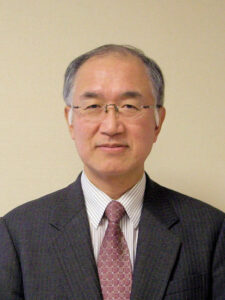 Satoshi Kobayashi is an advisor to YRP R&D Promotion Committee, which provides secretariate function to the Broadband Wireless Forum (BWF). In the BWF, Wireless Power Transmission Working Group (WPT WG) has been actively conducting technical and regulatory studies on WPT in Japan since 2009. About 50 entities / organizations and about 10 individual members participate in the WG activities these days.
Satoshi Kobayashi is an advisor to YRP R&D Promotion Committee, which provides secretariate function to the Broadband Wireless Forum (BWF). In the BWF, Wireless Power Transmission Working Group (WPT WG) has been actively conducting technical and regulatory studies on WPT in Japan since 2009. About 50 entities / organizations and about 10 individual members participate in the WG activities these days.
He is also a member of Wireless Power Supply System Technology Committee of the Society of Automobile Engineers of Japan (JSAE) and Expert Member of Wireless Power Transfer Consortium for Practical Applications (WiPoT). Based on his carrier to work for the Ministry of Post and Telecommunications (MPT) as a technical officer, for the International Telecommunication Union (ITU) as a Study Group Counsellor from 1991 to 1995, for the Association of Radio Industries and Businesses (ARIB) as Managing Director, etc., he has been actively participating in international meetings and conferences of ITU, IEC, APT, etc. for technical, operational and regulatory discussions on WPT. His resent activities focus on the necessity of international harmonization of regulations on WPT.
May 10, 11:00 – 11:30 [Room A]
Keynote 2:
Blueprint for Infinite Drive: Mastering the Optimal Location of In-Motion WPT for Electric Vehicles
Speaker: Yudai Honma (The University of Tokyo, Japan)
Chair: Kenjiro Nishikawa (Kagoshima University, Japan)
Abstract:
The relentless pursuit of sustainable mobility has accelerated the development of electric vehicles (EVs). Nevertheless, the EV market grapples with critical challenges, chiefly the limited driving range and prolonged charging times. In this context, in-motion wireless power transfer systems (WPTSs) emerge as a novel solution, drawing considerable interest as an alternative power supply system.
This keynote unveils pioneering research on the optimal locations for WPTS, fundamentally boosting EV efficiency and viability. Employing sophisticated Mixed-Integer Programming (MIP) models and detailed geographical/traffic information data, we have established a framework to identify strategic WPT locations in regional and urban areas.
Focusing on expressways, particularly within the Japanese network, our analysis demonstrates WPTS’s robust potential in enhancing coverage and economic feasibility. A key highlight is the flexibility in optimal WPTS placements, indicating a potential for dynamic control over power consumption’s spatial-temporal distribution.
In urban contexts, our research identifies optimal WPTS locations to facilitate an “infinite drive” for EVs, negating the need for traditional recharging stops. Using a typical medium-sized Japanese city as a case study, we found that the required WPTS distance is just a fraction of the total. Additionally, we explore necessary battery capacities, simulating EV charging and discharging behaviors amid varying urban conditions like acceleration, deceleration, and traffic signals.
These insights hold promise for integration with other platforms, such as smart grids and autonomous driving. The flexibility in location supports smart grid development, while the concept of infinite driving could greatly enhance the benefits of autonomous vehicles. This keynote not only shares groundbreaking findings but also marks a significant stride towards a greener, more interconnected world.
Biography:
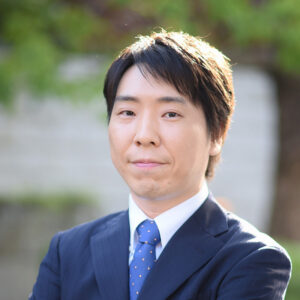 Yudai Honma is an Associate Professor and the Director of the Center for Social Complex Systems at the University of Tokyo’s Institute of Industrial Science. He specializes in mathematical modeling, operations research, and the interdisciplinary fields of urban and architectural planning, transportation, as well as alternative fuels, infrastructure, and vehicles. Recent papers have been published in Networks and Spatial Economics, International Journal of Hydrogen Energy and Journal of Energy Engineering, and presented at the Transportation Research Board. His research has been funded by the Japan Society for the Promotion of Science (JSPS), the Ministry of Land, Infrastructure, Transport and Tourism (MLIT), and the National Institute of Information and Communications Technology (NICT). He has also held positions at the Ministry of Education, Culture, Sports, Science and Technology (MEXT), and the Financial Services Agency (FSA). Furthermore, he is a former officer of the Section on Location Analysis (SOLA) in the Institute for Operations Research and the Management Sciences (INFORMS).
Yudai Honma is an Associate Professor and the Director of the Center for Social Complex Systems at the University of Tokyo’s Institute of Industrial Science. He specializes in mathematical modeling, operations research, and the interdisciplinary fields of urban and architectural planning, transportation, as well as alternative fuels, infrastructure, and vehicles. Recent papers have been published in Networks and Spatial Economics, International Journal of Hydrogen Energy and Journal of Energy Engineering, and presented at the Transportation Research Board. His research has been funded by the Japan Society for the Promotion of Science (JSPS), the Ministry of Land, Infrastructure, Transport and Tourism (MLIT), and the National Institute of Information and Communications Technology (NICT). He has also held positions at the Ministry of Education, Culture, Sports, Science and Technology (MEXT), and the Financial Services Agency (FSA). Furthermore, he is a former officer of the Section on Location Analysis (SOLA) in the Institute for Operations Research and the Management Sciences (INFORMS).
May 10, 11:00 – 11:30 [Room B]
Keynote 3:
On fundamental, methodology and prototype of OMEGA-SSPS via MPT
Speaker: Baoyan Duan, Xidian University, China
Chair: Naoki Shinohara (Kyoto University, Japan)
Abstract:
This speech will give a comprehensive introduction about the fundamentals, methodologies, and prototype development and experiment of OMEGA-SSPS via microwave wireless power transmission technologies. To begin with, an innovative design of OMEGA-SSPS is proposed. Then, the corresponding theory and technologies are discussed in detail, such as high-efficiency solar energy collection, large, flexible, and smart aerial structure design, systematic thermal management strategy, microwave wireless power transmission and the corresponding transmitting antenna and rectenna, multi-physical parameters test and measurement, precise control and so on. Next, the numerical simulation results of the above points are shown to demonstrate the project. Afterward, the experimental prototype and experiment results are given to demonstrate the innovative design. In the end, the next plan and road map of Chinese development of SSPS via MPT are described.
Biography:
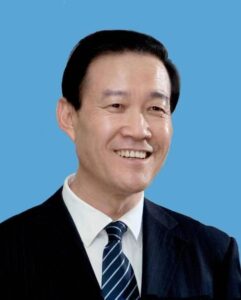 Baoyan Duan
Baoyan Duan
Academician of Chinese Academy of Engineering (CAE)
President of antenna system industry alliance (ASIA) of China
President of electromechanical engineering society (EMES) of China
Full Prof of Electromechanical Engineering, Xidian University (XDU), China
He received the B. Eng., M. Eng. and Ph. D. degrees in Electromechanical Engineering from XDU in 1981, 1984 and 1989 respectively. From 1991 to 1994, he studied as Postdoctoral Fellow at Liverpool University, U.K. and worked as Visiting Scientist at Cornell University, Ithaca, NY, in 2000. He is currently a full Professor of Electromechanical Engineering at XDU where he founded the State Key Lab on electromechanical coupling technology (EMCT) of electronic equipment of
China. He served as President of XDU, Xi’an, China (2002 – 2012).
He has been dedicating himself in research of electromechanical engineering and pioneered new area of electromechanical coupling (EMC) theory among electromagnetic, deformation and temperature fields of microwave electronic equipment (MEE), such as antenna, telescope, radar, high density cabinets and so on. He has made known the influence mechanism (IM) of nonlinear mechanical parameters on electronic performance of MEE. He developed the integrated design methodology of MEE based on EMC and IM. The above academic achievements have been successfully applied in national major engineering projects such as deep space exploration, spacecraft, space deployable antenna and so on,
As the chief designer of the Five hundrend meter Aperture Spherical radio Telescope (FAST), he presented an innovative design, in 1995, named optomechatronic design with electronic, mechanical and optic technologies and led the design, by which the millimeter dynamic-accuracy-positioning and ultra-light-weight (from 8,000 to 30 tons) were implemented. The telescope is in operation since 2016 and many new planets have been observed for the first time. He was invited to give a keynote speech on this achievement at EuCAP’2018 in London.
He serves as the presidents of ASIA and EMES of Chair. He is Fellows of International Engineering and Technology (IET) and Chinese Institute of Electronics (CIE), Members of Int. Society for Structural and Multidisciplinary Optimization (SMO). He is engaged as the editor-in-chief of Electromechanical Engineering of China, the associate editor-in-chief of Frontiers of Information Technology & Electronic Engineering (FITEE) and Chinese Journal of Electronics, the information and electronic engineering (IEE) subject editor-in-chief of CAE flagship magazine ENGINEERING.
He has published 400 papers and 10 books, authorized 50 patents of invention. He has received, as the first contributor, the 1st prize of national award for science and technology progress (STP) of China 2020, and the 2nd prize of national award for STP of China three times (2004, 2008 and 2013). In 2009, he was selected as science Chinese person. In 2012, he was issued Hong Kang HLHL prize of STP. In 2017, he received award for outstanding scientific and technological achievement from Chinese Academy of Science (CAS) and the golden prize of
“good design” of China. In 2018, he received the life achievement award from Asian Society of SMO. In 2021, he received the highest STP award from Shaanxi province of China and the Qian Xuesen award for outstanding contributions to the space development of China.
CCTV broadcasted a 40 minus special program DUAN Baoyan: minor discipline and great vision in 2016. People’s Daily broadcasted a 30 minus special program DUAN Baoyan: linking the end of universe with science and technology in 2021.
May 10, 11:00 – 11:30 [Room C]
Keynote 4:
Listening to the Whispers: Enhanced SWIPT Wake-Up Receiver for IoT Sensors
Speaker: Dominique Schreurs (KU Leuven, Belgium)
Chair: Qiaowei Yuan (Tohtech, Japan)
Abstract:
To address the challenges of energy constraints in Wireless Sensor Networks (WSNs) and Internet of Things (IoT) devices, this work presents an enhanced wake-up receiver for Simultaneous Wireless Information and Power Transfer (SWIPT) applications. The proposed design incorporates a passive 2 × 2 Multiple-Input Multiple-Output (MIMO) antenna configuration, which enhances the sensitivity and reliability of detecting wake-up signals under diverse environmental conditions. The architecture also includes a 2-stage rectifier and operational amplifiers (op-amps) to efficiently harvest energy from radio-frequency (RF) signals.
An important breakthrough is the integration of backscattering technology, which allows the wake-up receiver to support battery-less operations in IoT networks. This effectively minimizes energy consumption and prolongs the lifespan of the devices. The double capacity of the receiver to activate sensor nodes and transmit data through radio frequency signals provides a practical and environmentally friendly solution for the IoT.
Biography:
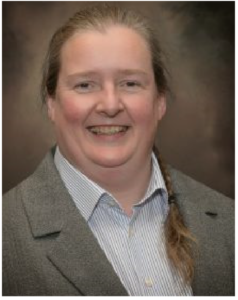 Dominique Schreurs (Fellow, IEEE) received the M.Sc. and Ph.D. degrees in electronic engineering from KU Leuven, Leuven, Belgium, in 1992 and 1997, respectively.
Dominique Schreurs (Fellow, IEEE) received the M.Sc. and Ph.D. degrees in electronic engineering from KU Leuven, Leuven, Belgium, in 1992 and 1997, respectively.
As a Post-Doctoral Fellow, she was a Visiting Scientist with Agilent Technologies, Santa Rosa, CA, USA; ETH Zürich, Zürich, Switzerland; and the National Institute of Standards and Technology, Boulder, CO, USA. She is currently a Full Professor at KU Leuven. Her research interests include microwave/mmWave metrology, device and circuit modeling, and subsystem design for wireless and biomedical applications.
Dr. Schreurs has been with IEEE MTT-S AdCom since 2009 in multiple roles. From 2012 to 2014, she was a Distinguished Microwave Lecturer. From April 2018 to December 2019, she was the Microwave Theory and Technology Society President. She initiated the IEEE Women in Microwaves Event at the European Microwave Week in 2008 and has ever since acted as an Advisor for WiM events. She served as the Technical Program Committee Co-Chair for the 2023 International Microwave Symposium and the Conference Chair for the 2023 International Microwave Biomedical Conference. From 2014 to 2016, she was the Editor-in-Chief of IEEE TRANSACTIONS ON MICROWAVE THEORY AND TECHNIQUES.
May 11, 11:00 – 11:30 [Room A]
Keynote 5:
Toward 7G Wireless Information and Power Transfer: 1G Mobile Power and 6G Mobile Communications
Speaker: Bruno Clerckx (Imperial College London, United Kingdom)
Chair: Kenjiro Nishikawa (Kagoshima University, Japan)
Abstract:
Radio waves carry both energy and information simultaneously. Nevertheless, radio-frequency (RF) transmissions of these quantities have traditionally been treated separately. Future wireless networks will experience a paradigm shift, namely, unifying wireless transmission of information and power to make the best use of the RF spectrum and radiation as well as the network infrastructure for the dual purpose of communicating and energizing. Such networks will enable trillions of future low-power devices to sense, compute, connect, and energize anywhere, anytime, and on the move. The design of such future networks brings new challenges and opportunities for RF, communications, signal processing, machine learning, sensing, and computing. In this talk, I give an overview of the research progress to lay the foundations of the envisioned dual-purpose networks and establish the theory, design, and experiments of wireless information and power transmission (WIPT) and discuss future research challenges.
Biography:
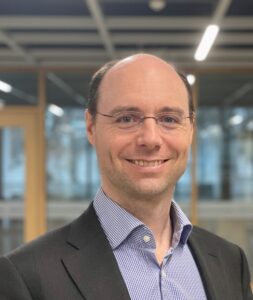 Bruno Clerckx is a (Full) Professor, the Head of the Wireless Communications and Signal Processing Lab, and the Deputy Head of the Communications and Signal Processing Group, within the Electrical and Electronic Engineering Department, Imperial College London, London, U.K. He is also the Chief Technology Officer (CTO) of Silicon Austria Labs (SAL) where he is responsible for all research areas of Austria’s top research center for electronic based systems. He received the MSc and Ph.D. degrees in Electrical Engineering from Université Catholique de Louvain, Belgium, and the Doctor of Science (DSc) degree from Imperial College London, U.K. Prior to joining Imperial College in 2011, he was with Samsung Electronics, Suwon, South Korea, where he actively contributed to 4G (3GPP LTE/LTE-A and IEEE 802.16m). He has authored two books on “MIMO Wireless Communications” and “MIMO Wireless Networks”, 300 peer-reviewed international research papers, and 150 standards contributions, and is the inventor of 80 issued or pending patents among which several have been adopted in the specifications of 4G standards and are used by billions of devices worldwide. His research spans the general area of wireless communications and signal processing for wireless networks. He received the prestigious Blondel Medal 2021 from France for exceptional work contributing to the progress of Science and Electrical and Electronic Industries, the 2021 Adolphe Wetrems Prize in mathematical and physical sciences from Royal Academy of Belgium, multiple awards from Samsung, IEEE best student paper award, and the EURASIP (European Association for Signal Processing) best paper award 2022. He is a Fellow of the IEEE and the IET, and an IEEE Communications Society Distinguished Lecturer.
Bruno Clerckx is a (Full) Professor, the Head of the Wireless Communications and Signal Processing Lab, and the Deputy Head of the Communications and Signal Processing Group, within the Electrical and Electronic Engineering Department, Imperial College London, London, U.K. He is also the Chief Technology Officer (CTO) of Silicon Austria Labs (SAL) where he is responsible for all research areas of Austria’s top research center for electronic based systems. He received the MSc and Ph.D. degrees in Electrical Engineering from Université Catholique de Louvain, Belgium, and the Doctor of Science (DSc) degree from Imperial College London, U.K. Prior to joining Imperial College in 2011, he was with Samsung Electronics, Suwon, South Korea, where he actively contributed to 4G (3GPP LTE/LTE-A and IEEE 802.16m). He has authored two books on “MIMO Wireless Communications” and “MIMO Wireless Networks”, 300 peer-reviewed international research papers, and 150 standards contributions, and is the inventor of 80 issued or pending patents among which several have been adopted in the specifications of 4G standards and are used by billions of devices worldwide. His research spans the general area of wireless communications and signal processing for wireless networks. He received the prestigious Blondel Medal 2021 from France for exceptional work contributing to the progress of Science and Electrical and Electronic Industries, the 2021 Adolphe Wetrems Prize in mathematical and physical sciences from Royal Academy of Belgium, multiple awards from Samsung, IEEE best student paper award, and the EURASIP (European Association for Signal Processing) best paper award 2022. He is a Fellow of the IEEE and the IET, and an IEEE Communications Society Distinguished Lecturer.
May 11, 11:00 – 11:30 [Room B]
Keynote 6:
Foreign Object Detection in Wireless Power Transfer Systems and an Outlook of the Future of Wireless Power Transfer
Speaker: Chris Mi (San Diego State University, USA)
Chair: Hiroshi Fujimoto (The University of Tokyo, Japan)
Abstract:
Wireless power transfer (WPT) technology has been developed for the wireless charging of electric vehicles, consumer electronics, and other applications. Inductive power transfer (IPT) uses the magnetic field for power transfer and it is currently the most popular and mature WPT technology. However, the strong magnetic field will heat up metal objects falling in the charging area due to eddy currents generated in the objects. It can also harm animals or toddlers staying in the charging area. To deal with these issues, foreign object detection (FOD), including metal object detection (MOD) and living object detection (LOD), should be developed for the safe operation of IPT systems. FOD can be divided into system parameter detection methods, wave-based detection methods, and field-based detection methods. System parameter detection methods are normally used in low-power systems for MOD. Wave-based detection methods are suitable for high-power applications, for both MOD and LOD. Field-based detection methods work for both high-power and low-power applications, for both MOD (in an inductive way) and LOD (in a capacitive way). This presentation first reviews and summarizes the state-of-the-art development of FOD technology in IPT systems. Then, a novel detection coil layout is presented to not only cover the whole charging area but also decouple from the transmitter and receiver to minimize the impacts on power transfer. A mixed resonant circuit will be explained which will have better performance than the parallel resonant circuit. The impacts of the detection coil layer, turn number, trace width, and the capacitance ratio in the mixed resonant circuit will be discussed.
In addition, the talk will also provide a comprehensive overview of recent advancements, challenges, and potential applications of wireless power transfer technology, compare various wireless power transfer technologies, including magnetic-filed coupling, electric-filed coupling, microwaves, and laser technologies. We will discuss the field of wireless power transmission that has already been applied, such as wireless charging of electric vehicles, consumer electronics, implantable medical devices, underwater equipment, as well as applications that are still under research such as space microwave transmission, large-scale free space energy transmission, and roadway-powered electric vehicles.
Biography:
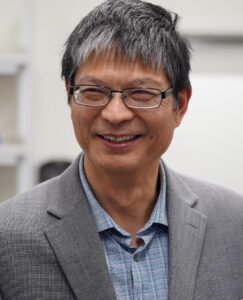 Dr. Mi is the Distinguished Professor of Electrical and Computer Engineering at San Diego State University. He is a Fellow of IEEE and SAE. He is also the Director of the Caili & Daniel Chang Center for Electric Drive Transportation at SDSU. He was previously a faculty member at the University of Michigan-Dearborn from 2001 to 2015, and an Electrical Engineer with General Electric from 2000 to 2001. He also served as the CTO of 1Power Solutions from 2008 to 2011, and CTO of EV Safe Charger, Inc. from 2021. Dr. Mi received his Ph. D from the University of Toronto, Canada, in 2001.
Dr. Mi is the Distinguished Professor of Electrical and Computer Engineering at San Diego State University. He is a Fellow of IEEE and SAE. He is also the Director of the Caili & Daniel Chang Center for Electric Drive Transportation at SDSU. He was previously a faculty member at the University of Michigan-Dearborn from 2001 to 2015, and an Electrical Engineer with General Electric from 2000 to 2001. He also served as the CTO of 1Power Solutions from 2008 to 2011, and CTO of EV Safe Charger, Inc. from 2021. Dr. Mi received his Ph. D from the University of Toronto, Canada, in 2001.
Dr. Mi has published five books, 220 journal papers, 130 conference papers, and 20+ issued and pending patents. He served as Editor-in-Chief, Area Editor, Guest Editor, and Associate Editor of multiple IEEE Transactions and international journals, as well as the General Chair of over ten IEEE international conferences. Dr. Mi has won numerous awards, including the “Distinguished Teaching Award” and “Distinguished Research Award” from the University of Michigan-Dearborn, IEEE Region 4 “Outstanding Engineer Award,” IEEE Southeastern Michigan Section “Outstanding Professional Award,” and SAE “Environmental Excellence in Transportation (E2T) Award.” He is the recipient of three Best Paper Awards from IEEE Transactions on Power Electronics and the 2017 ECCE Student Demonstration Award. In 2019, he received the Inaugural IEEE Power Electronics Emerging Technology Award. In 2022, he received the Albert W. Johnson Research Lectureship and was named the Distinguished Professor, the highest honor given to a SDSU faculty member and only one award is given each year. Most recently, he received the 2023 IEEE PELS Vehicle and Transportation Systems Achievement Award and IEEE Transactions on Industry Applications Best Paper Award.
May 11, 11:00 – 11:30 [Room C]
Keynote 7:
High Power Electric Generation and WPT Demonstration Mission
Speaker: Xinbin Hou (China Academy of Space Technology, China)
Chair: Bo Yang (Kyoto University, Japan)
Abstract:
Space Solar Power is important development directions for the world to tackle the climate change. High power generation and long distance wireless power transmission are the most important technologies of SSP and need to be demonstrated step by step to meet the demand to construct the commercial SSP. This paper presents a proposed first-step demonstration mission in space. The mission includes a main spacecraft and an energy receiving spacecraft in LEO. The main spacecraft will emit about 4kW microwave and 1km laser to the receiving station on ground to demonstration the WPT chain. At same time, the receiving spacecraft will receive laser to demonstrate LPT in space.
Biography:
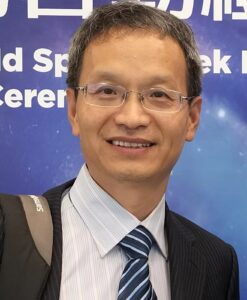 Xinbin Hou is a senior researcher at Qian Xuesen Laboratory of Space Technology, China Academy of Space Technology (CAST). He has engaged in Solar Power Satellite research since 2006. He was the head of SPS research project from 2008 to 2015, the vice head of the SPS research project from 2016 to 2020. Now he is the head of SPS research project in China. He is the secretariat of IAF Space Power Committee, the member of IAA Permanent Committee on Space Solar Power and the member and vice secretary general of Space Solar Power Committee, Chinese Society of Astronautics. He received a bachelor’s degree from North China Electric Power University in 1993, a master’s degree from Xidian University in 1998 and a PH.D from Beihang University in 2002. He has published four books (including two translations) and applied over 10 patents and published over 50 papers special in the field of SPS. He proposed the Multi-Rotary joints SPS (MR-SPS) concept in 2014. The concept won the first place in the 2015 International SunSat Design Competition and has been the most important concept in China and one of the leading concepts in the world. In 2021, he proposed the updated SPS concept, Modular Multi-Rotary joints SPS (MMR-SPS). Now he is mainly working on pushing forward the SPS technological demonstration mission in China.
Xinbin Hou is a senior researcher at Qian Xuesen Laboratory of Space Technology, China Academy of Space Technology (CAST). He has engaged in Solar Power Satellite research since 2006. He was the head of SPS research project from 2008 to 2015, the vice head of the SPS research project from 2016 to 2020. Now he is the head of SPS research project in China. He is the secretariat of IAF Space Power Committee, the member of IAA Permanent Committee on Space Solar Power and the member and vice secretary general of Space Solar Power Committee, Chinese Society of Astronautics. He received a bachelor’s degree from North China Electric Power University in 1993, a master’s degree from Xidian University in 1998 and a PH.D from Beihang University in 2002. He has published four books (including two translations) and applied over 10 patents and published over 50 papers special in the field of SPS. He proposed the Multi-Rotary joints SPS (MR-SPS) concept in 2014. The concept won the first place in the 2015 International SunSat Design Competition and has been the most important concept in China and one of the leading concepts in the world. In 2021, he proposed the updated SPS concept, Modular Multi-Rotary joints SPS (MMR-SPS). Now he is mainly working on pushing forward the SPS technological demonstration mission in China.
